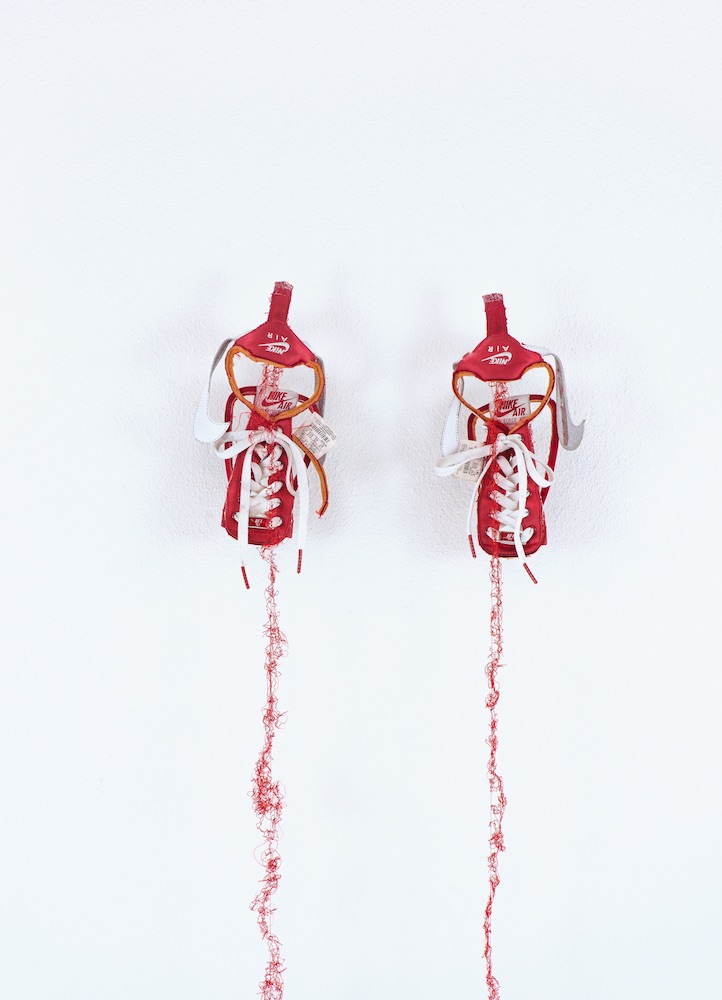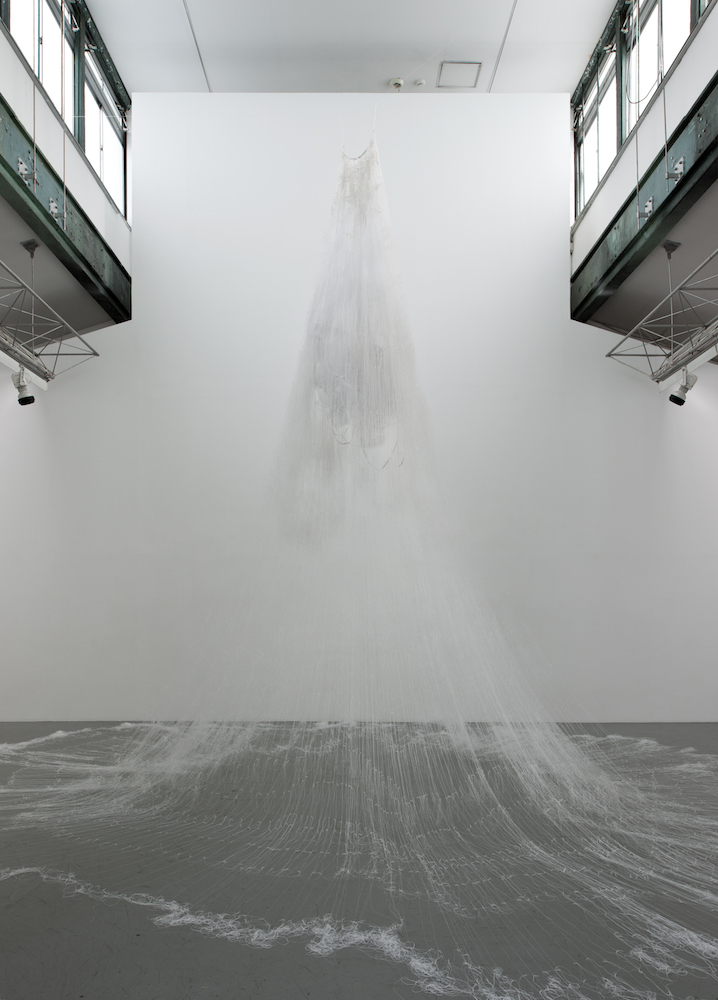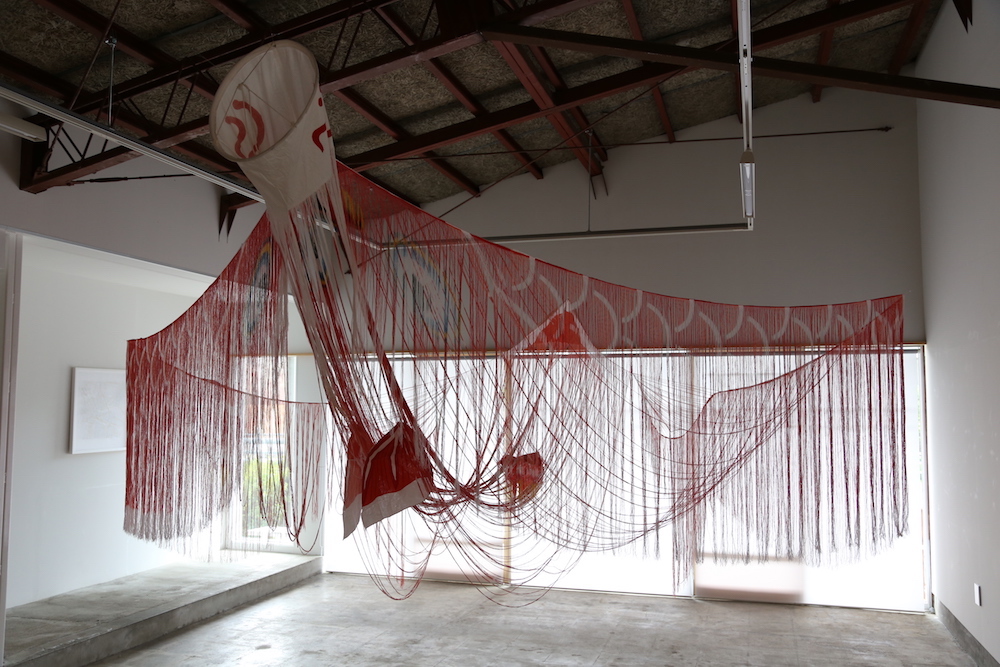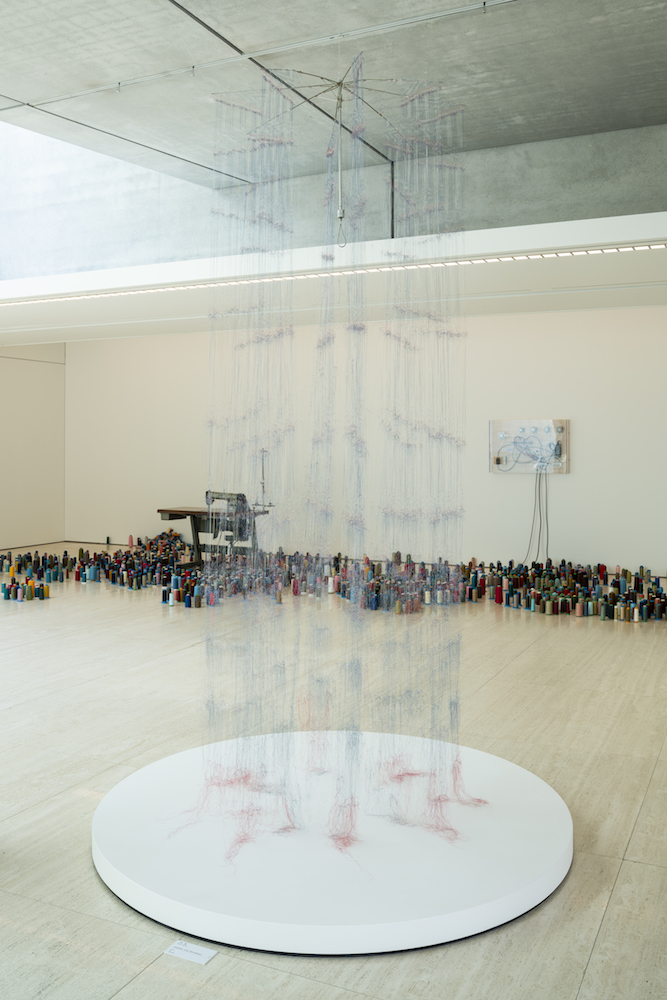平野薫 HIRANO Kaoru

《untitled -red NIKE-》2009年 スニーカー サイズ可変
撮影:フェリックス・ワイノルド 写真提供:州立アウクスブルク繊維産業博物館 (TIM)
untitled -red NIKE-, 2009, Sneaker, Dimensions variable
Photo by Felix WEINOLD Photo courtesy:TIM | State Textile and Industry museum
平野薫
HIRANO Kaoru
1975年、長崎県生まれ。 現在、広島県在住、活動。
“古着を糸になるまで分解する、そしてその糸を結び直すことによって、新たな形へと生まれ変わらせる。”
わたしは、このような方法を用いて作品制作を行い、気配や記憶など実体が不確かで不可思議な存在を追い求めてきました。しかし、わたしが現在も継続するこの方法の中には、これまで自分ですら気付かなかった、秘められた意味があることへと思い至りました。
ヒトが類人猿から人類へと歩みを進めて以来、ヒトは布と共にありました。古代人は布の文様に祈りを込め、現代人は流行の衣服へと仕立てられた布を纏い生活しています。そんな長い歴史の中で、ヒトは布の上に多くの文化を創造してきましたが、中でも現代社会に多大な影響を与えた産業革命では織物工業がその礎を築きました。そして、産業機械の発展が進めば進むほど、より速くより多くの製品が製造されて、工業化の第一段階に属す織物工業は、低賃金の労働力を求めて工場を移動します。その結果、資本家は富を得ましたが、反面、多くの工場従業者は、貧しさのなかで労働を強いられる不均衡へと陥りました。
わたしが古着から時間をかけて一本一本糸を引き抜く作品制作の方法、この一見無意味に見える行為の反復。そしてこの作品制作の方法に秘められた意味。それは、この作品制作の方法が、工業化の流れの中にある労働とは対照的なアンチテーゼであり、ヒトがこれまで布と共に歩んできた歴史を遡り内省する行為でもあるということです。
平野 薫「HIRAKU Project 05 平野薫―記憶と歴史」展、ポーラ美術館、2018年、リーフレットより抜粋
Born in Nagasaki, Japan 1975. Lives and works in Hiroshima, Japan.
“Transforming old clothing into something new by unraveling threads and then joining them together again.”
I have been using this method to create works that explore the mystifying existence of such uncertain entities as presence and memory. However, I realized that there might be hidden meanings that even I had not recognized in this technique as I continued to use until the present.
Humans have been connected with clothing since the time of archaic species. Ancient peoples infused cloth with prayer, while in modern times we dress ourselves in clothes tailored to fashions. Many cultures gave expression through cloth in this long history, but it was mechanized spinning that laid the foundation for the Industrial Revolution and had an enormous impact on modern society. As mechanization proceeded, products could be manufactured more quickly and in greater numbers than before and the textile industry, part of the first phase of industrialization, located factories in proximity of low wage labor. Social imbalances grew as a result, with capitalists gaining wealth while factory workers fell into poverty.
My method of creating works by painstakingly deconstructing old clothes one thread at a time may appear tedious and meaningless. The significance may seem obscure. It directly contradicts modes of labor under industrialization and leads us instead to contemplate our historical connections with cloth.
-Extract from Kaoru Hirano, HIRAKU Project 05 KAORU HIRANO ーMemory and History ( the exhibition leaflet ), Pola Museum of Art, Japan, 2018 (Translated by Cheryl Silverman)
更新された最新の情報は、作家のウェブサイトをご覧ください。
Please refer to the artist’s website for new updates.

《untitled -brides-》2012年 ウェディングドレス サイズ可変 撮影:表 恒匡 写真提供:SCAI THE BATHHOUSE
untitled -brides-, 2012, Wedding dress, Dimensions variable Photo by OMOTE Nobutada Photo courtesy:SCAI THE BATHHOUSE

《untitled -koinobori red-》2017年 鯉のぼり サイズ可変
untitled -koinobori red-, 2017, Koinobori, Dimensions variable

手前:《untitled -rain Hiroshima-》2018年 傘 サイズ可変
奥:《machine》2018年 工業用ミシン、ミシン糸、電動シリンダ、制御盤 サイズ可変
展示風景「HIRAKU Project 05 平野薫ー記憶と歴史」2018年 ポーラ美術館 撮影:加藤 健 写真提供:ポーラ美術館
Front : untitled -rain Hiroshima-, 2018, Umbrella, Dimensions variable
Back : machine, 2018, Industrial sewing machine, Sewing thread spool, Electric cylinder, Control panel, Dimensions variable
Installation view at HIRAKU Project 05 KAORU HIRANO ーMemory and History, 2018, Pola Museum of Art
Photo by KATO Ken Photo courtesy:Pola Museum of Art

